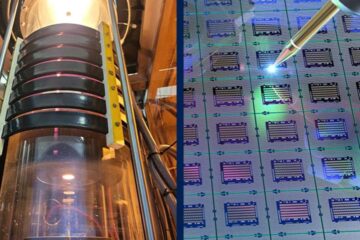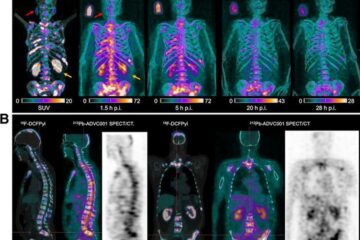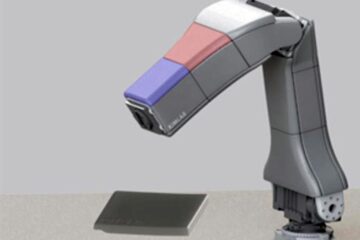New Optical Antenna Brings Massive Benefits to Wireless Networks and More

A new optical antenna, developed by researchers at the University of Warwick, will bring significant benefits to credit card payments, wireless networks, household electronics and longer distance data transfer.
The device was developed by Professor Roger Green and Roberto Ramirez-Iniguez, in the University of Warwick`s Engineering Department. It applies techniques used to manipulate radio frequencies to select the incoming “signal frequencies” carried on infrared beams to produce the optical equivalent of the radio.
The new optical antenna has now been licensed to Optical Antenna Solutions of Nottingham which will be responsible for further development and marketing world-wide. Derick Wilson, Managing Director of Optical Antenna Solutions, believes the technology provides enormous benefits to several industries, and has significant commercial opportunities. One of the first applications being considered is to use the antenna to provide secure practical “point and pay methods” for credit cards. The company will unveil the new technology for the first time at the Comdex exhibition in Las Vegas on 18th November.
The optical antenna serves the same purpose as an electronic one. It must collect energy from an area and channel it through to a receiving element or, conversely, transmit energy which has originated from a small source over an area.
This new device uses a combination of precise curvatures on the lens part of the instrument with a multi-layered filter. The optical antenna is so precise that it can detect a signal on one particular wavelength of light and it is 100 times more efficient at gathering in a signal than any previous optical sensor of this kind. This has immediate benefits for indoor wireless networks and household devices. It allows signal transmitters and receivers to operate at a significant angle to each other and to discriminate much more finely between signals. For external data transfer applications it can be used to greater distances – up to 3 miles.
Wireless networks are an economical and flexible alternative to wired systems. Lately, two major transmission technologies have been used to achieve indoor wireless communication: RF (radio) and infrared. For many reasons infrared is often preferred – infrared links provide high bandwidth at low cost, infrared is immune to radio interference, the spectrum is freely available, and infrared components are inexpensive, small and consume little power. This new optical antenna will help turn even more people towards infrared as an alternative to the high cost of maintaining wired networks.
Media Contact
More Information:
http://www.warwick.ac.uk/All latest news from the category: Communications Media
Engineering and research-driven innovations in the field of communications are addressed here, in addition to business developments in the field of media-wide communications.
innovations-report offers informative reports and articles related to interactive media, media management, digital television, E-business, online advertising and information and communications technologies.
Newest articles

Silicon Carbide Innovation Alliance to drive industrial-scale semiconductor work
Known for its ability to withstand extreme environments and high voltages, silicon carbide (SiC) is a semiconducting material made up of silicon and carbon atoms arranged into crystals that is…

New SPECT/CT technique shows impressive biomarker identification
…offers increased access for prostate cancer patients. A novel SPECT/CT acquisition method can accurately detect radiopharmaceutical biodistribution in a convenient manner for prostate cancer patients, opening the door for more…

How 3D printers can give robots a soft touch
Soft skin coverings and touch sensors have emerged as a promising feature for robots that are both safer and more intuitive for human interaction, but they are expensive and difficult…





















